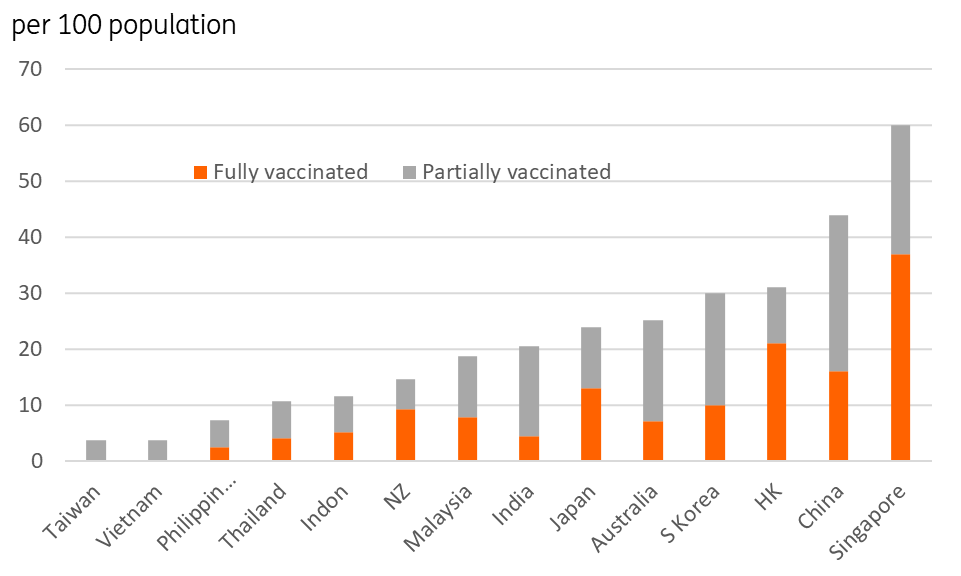Asia: The race to vaccinate
Asia has recently made better progress on vaccinations as vaccines become more widely available. But there is still a long way to go
Asia vaccinations by dose (as of 4 July, 2021)

A month is a long time in epidemiology
Asia's slow vaccine rollout has been a constant refrain in these notes since the beginning of the year, but in the last month, there has been some improvement. Whether this is the result of a change in heart of governments, some of which were initially very particular about which vaccines they were willing to administer to their populations, or to greater physical access to scarce vaccines, or more likely, a bit of both, the numbers are beginning to look more encouraging.
One of the biggest improvements has been in China, which is relevant for the rest of the region since it is the largest market for exports locally. A more widely vaccinated China equates to a less risky Asian export outlook, which should be good news across the whole region.
But we have also seen some pick-up in the pace of some of the early laggards on vaccination. South Korea has now fully or partially vaccinated about 30% of its population, though that is still a weak outcome compared to 60% for Singapore and 44% for China (figures accurate as of 4 July). It looks weaker still compared to equivalent figures for the US (54.5%) or the UK (66.5%) or Germany (55.2%).
And though we have seen the pace of vaccination picking up, the numbers are still fairly unimpressive. Australia comes in the top half of the APAC league table, with only 25% of its population "jabbed" - and most of these only once. As we now know, one jab of most of the widely administered vaccines provides much less protection to some of these new variants, so there is a very long way to go, and herd immunity remains a distant goal. Australia, for example, is still prone to regional movement restrictions as cases sporadically flare up.
There is also still a large and unimpressive tail in this distribution with quite a few economies in the region still showing only about 10% or lower vaccination rates. Even India has only partially or fully vaccinated about 20% of its population, in spite of (or perhaps because of) its recent problems. And it is in this long tail, including Indonesia, Malaysia, the Philippines and Thailand that, unsurprisingly, we see most of the problems with Covid in Asia, which will weigh on the prospects for growth in the region.
As the sharp pick up in the relatively well-vaccinated UK demonstrates, no economy in Asia will be able to safely reopen, and growth will remain at risk until vaccination rates rise a lot higher.
This publication has been prepared by ING solely for information purposes irrespective of a particular user's means, financial situation or investment objectives. The information does not constitute investment recommendation, and nor is it investment, legal or tax advice or an offer or solicitation to purchase or sell any financial instrument. Read more
Download
Download article
8 July 2021
Good MornING Asia - 9 July 2021 This bundle contains 4 Articles